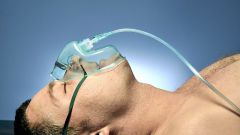Anesthesia is a procedure which consists in deprivation of the body in General, or specific area of sensitivity, so people didn't feel any pain during treatment.
Anesthesia, or anaesthesia may be local, regional or General.
For a long time in medicine there is debate about the dangers of anesthesia, and here we can say only one thing: it all depends on the skill of the anesthesiologist of each patient. But General anesthesia, no doubt, has a negative impact on the body, possible failures in the functioning of the heart and lungs during surgery.
Regional anesthesia can be conduction, epidural, spinal. Local anesthesia is aimed at disabling the nerve endings in a particular area of the body, the most obvious example – shots of the dentist, allowing to safely clean the tooth.
General anesthesia is accompanied by complicated operations, during which the patient is not supposed to feel anything.
Among the most common negative effects of General anesthesia are:
• sore throat;
• nausea, dizziness;
• itching and headache;
• lightheadedness, tremors;
• muscle pain, back and lower back;
• confusion.
Rare but the most dangerous complications are:
• highly severe allergic reaction;
• damage to the eyes and nerves;
• abnormalities of the cerebral cortex;
• death of the patient.
Can also exhibit such terrible consequences as injury to teeth, tongue and lips, postoperative pulmonary infection.
More high-quality, expensive anesthesia is less harmful and may even bring benefits, and side effects are unlikely. Cheap anesthesia, in turn, can damage brain cells. Also affect individual intolerance of medicines, so you need to provide this information to doctors in order to the anesthetist can choose the drug for anesthesia.
To minimize the risk of complications from anesthesia should carefully consider the choice of the anesthesiologist: only a professional with great experience is able to fully explore the features of the patient and to find the optimal kind and dose of the drug.
Anesthesia, or anaesthesia may be local, regional or General.
The most dangerous kind is General anesthesia, because while her mind is completely disconnected.
For a long time in medicine there is debate about the dangers of anesthesia, and here we can say only one thing: it all depends on the skill of the anesthesiologist of each patient. But General anesthesia, no doubt, has a negative impact on the body, possible failures in the functioning of the heart and lungs during surgery.
Features of some varieties of anesthesia
Regional anesthesia can be conduction, epidural, spinal. Local anesthesia is aimed at disabling the nerve endings in a particular area of the body, the most obvious example – shots of the dentist, allowing to safely clean the tooth.
General anesthesia is accompanied by complicated operations, during which the patient is not supposed to feel anything.
Regardless of the training of doctors, there is always the danger that people will not Wake up after General anesthesia.
Possible complications after General anesthesia
Among the most common negative effects of General anesthesia are:
• sore throat;
• nausea, dizziness;
• itching and headache;
• lightheadedness, tremors;
• muscle pain, back and lower back;
• confusion.
Rare but the most dangerous complications are:
• highly severe allergic reaction;
• damage to the eyes and nerves;
• abnormalities of the cerebral cortex;
• death of the patient.
Can also exhibit such terrible consequences as injury to teeth, tongue and lips, postoperative pulmonary infection.
The price of different types of anesthesia
More high-quality, expensive anesthesia is less harmful and may even bring benefits, and side effects are unlikely. Cheap anesthesia, in turn, can damage brain cells. Also affect individual intolerance of medicines, so you need to provide this information to doctors in order to the anesthetist can choose the drug for anesthesia.
To minimize the risk of complications from anesthesia should carefully consider the choice of the anesthesiologist: only a professional with great experience is able to fully explore the features of the patient and to find the optimal kind and dose of the drug.





